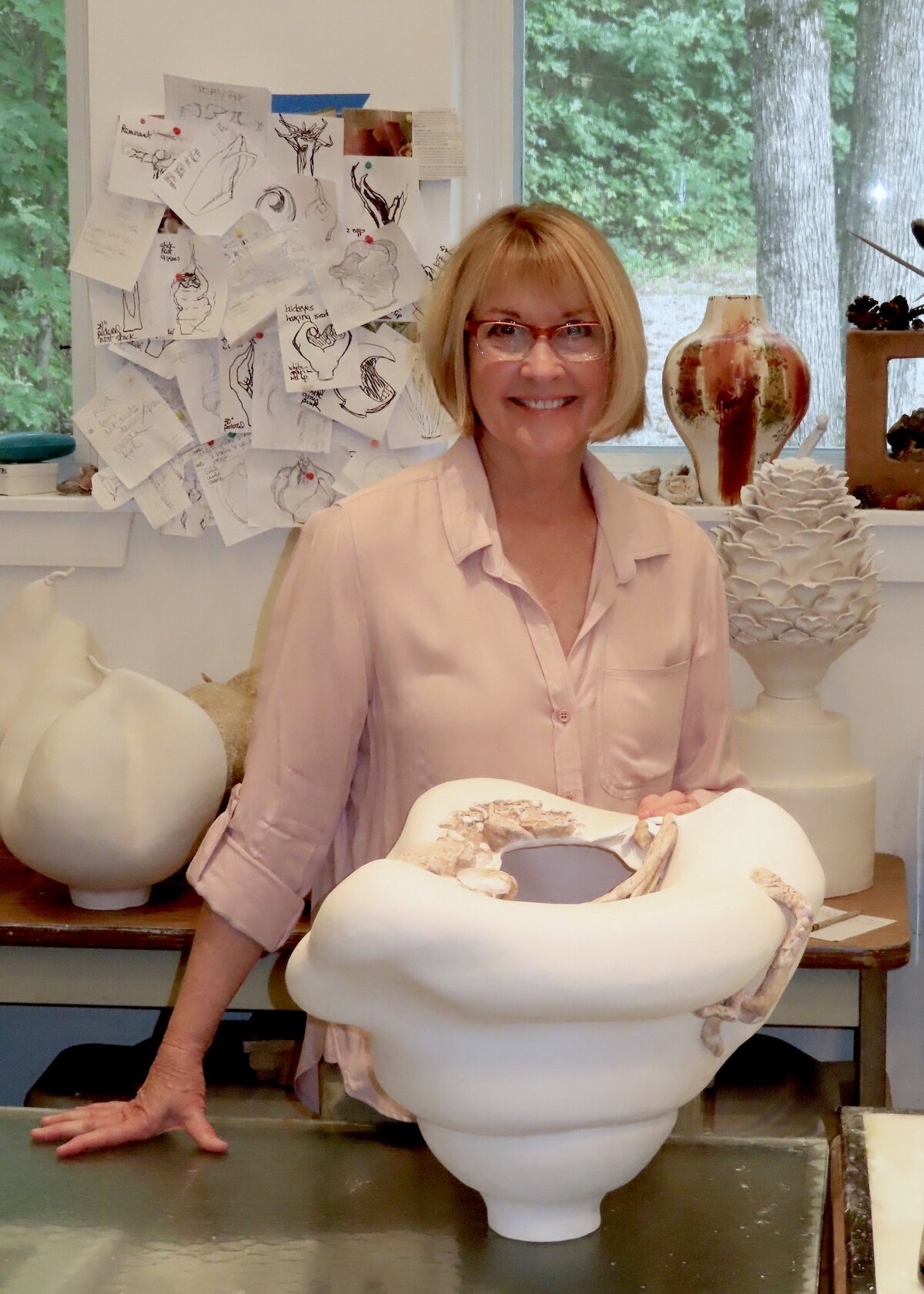Interview with artist Kat Wilson
Kat Wilson is energy. You can probably feel it on the drive to Fayetteville, Arkansas. Kat Wilson is about caring and giving back to the creative people she surrounds herself with. Kat Wilson is about documenting the human existence - quirks and all - through the eye of a master photographer. Kat Wilson is about having some fun doing what she loves. Her work has been exhibited, performed, and published both regionally and nationally. More of her photographs and projects can be found at katwilsonartist.com.
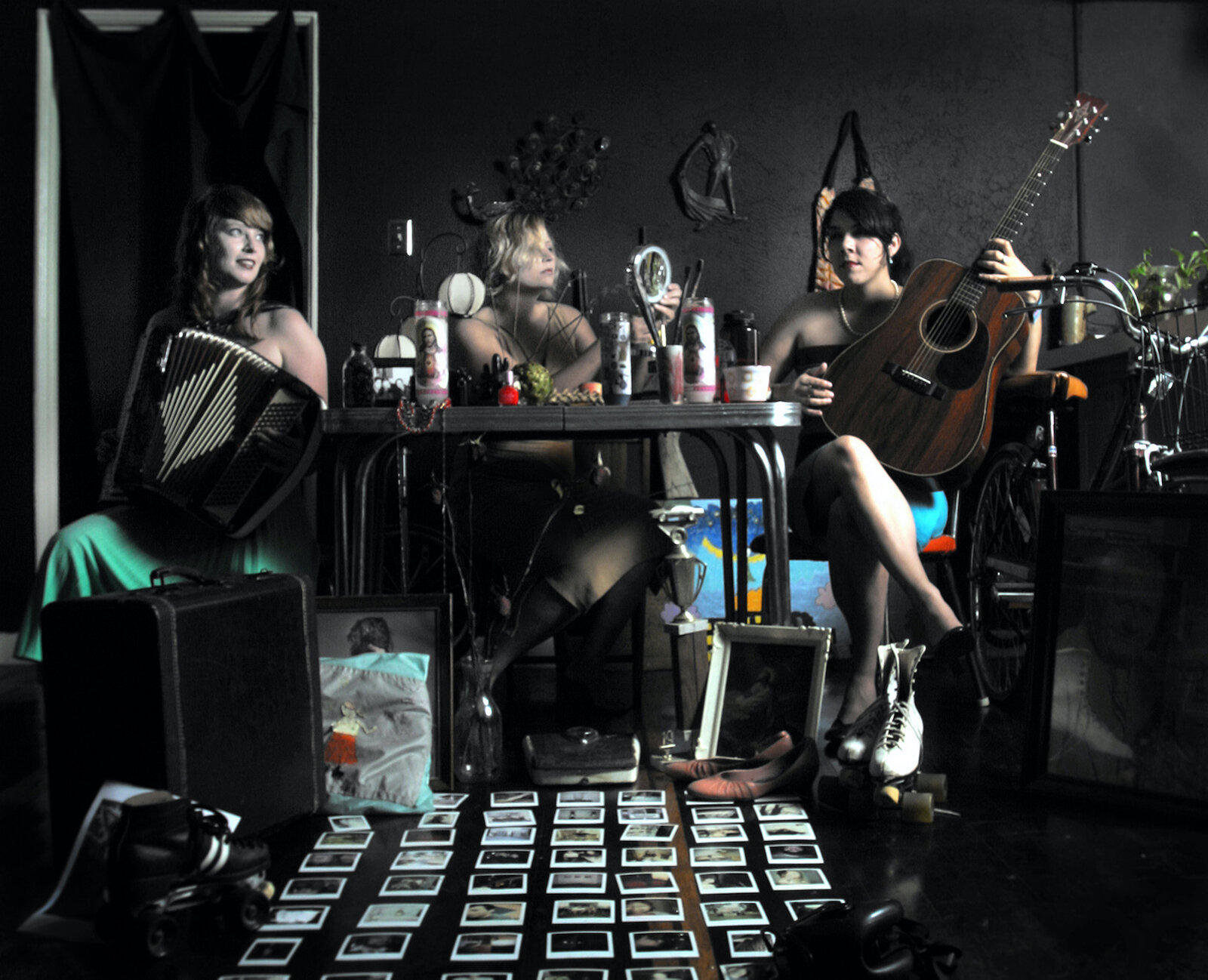
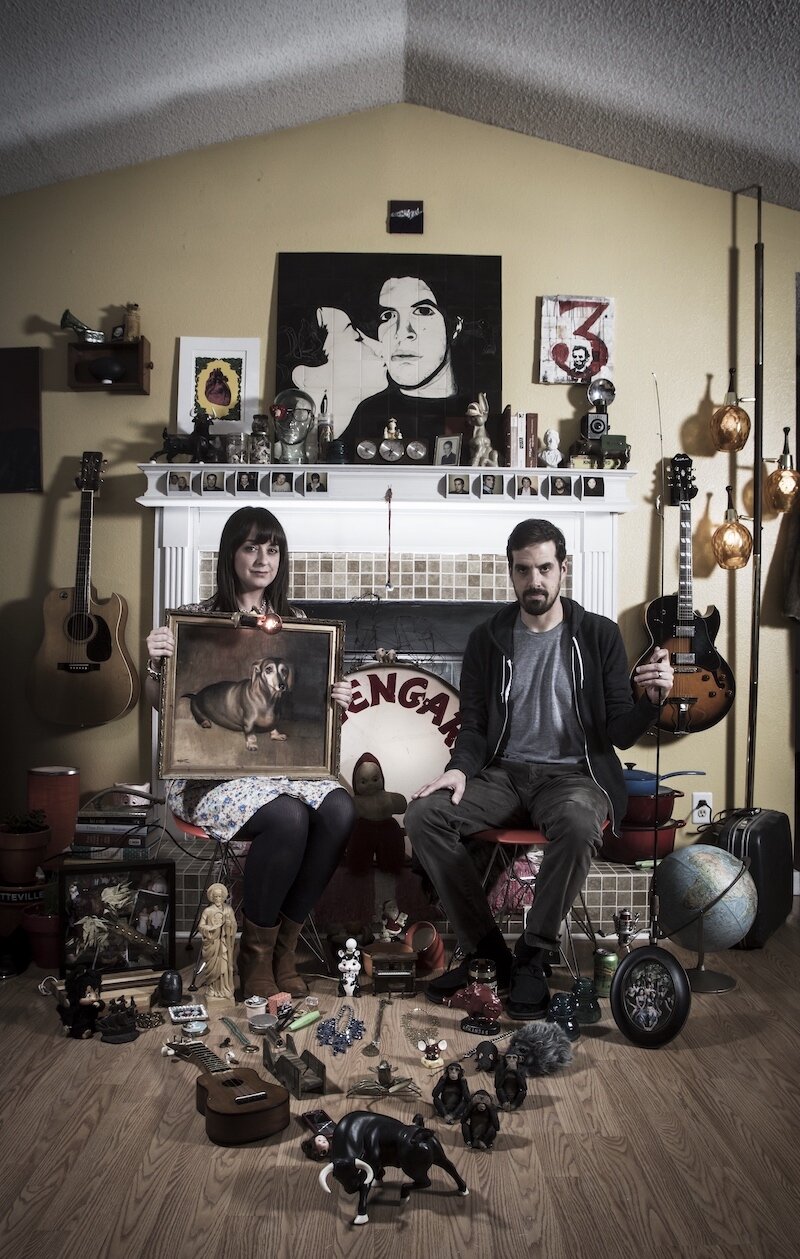
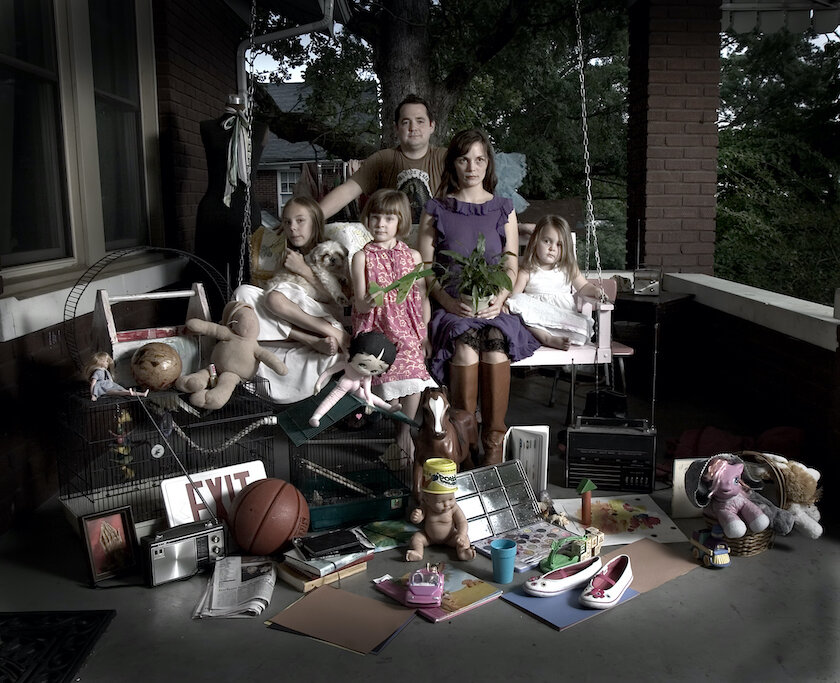
AAS: You earned a BFA in Studio Art from the University of Central Arkansas and then an MFA in Photography from UA Fayetteville – as a Presidential Scholar and Fulbright Scholar, respectively, I might add – and you have studied in New York along the way. Are you originally from Arkansas? What has brought you back or kept you in Arkansas?
KW: I always like to say I'm bicoastal because I've lived on both sides of the Arkansas River, but I am originally from the Wild West of Arkansas, Fort Smith. Before the age of 25, I lived in New York City briefly twice, interned a semester in Rochester, New York (the photography capital of the world at the time thanks to Kodak), and worked in Beverly Hills as a photo assistant to several photographers. But because of the internet and sudden connectivity it provided, I had calculated that I didn't need to live on the East or West Coast to get to the level of artist I AM striving to be. However, I did need to live at least two hours away from Fort Smith, so I could be a lesbian. So I happily ended up in Little Rock, where I was quickly welcomed into and fell in love with their art scene. I ended up in Northwest Arkansas for Graduate School, where I met my wife and started this chapter of my life and art practice. We often talk about moving to Italy or Mexico City or Santa Barbara or Marfa, but Arkansas is who I am.
I have an excellent art education thanks that's to my art professor trifecta of Don Lee, Maxine Payne, and Mike Peven. But it's been years since Graduate school, and I think it's incredibly vital to my art to continue my education. I was lucky enough to have been invited to train in Kansas City with Artist INC, a program that teaches professional development for artists working in all disciplines. I've now been a facilitator in their Northwest Arkansas region since 2016. We just finished up this year's group of artists over zoom. The International Center of Photography, based in New York City, started offering workshops and courses over zoom early on during self-quarantine. What caught my eye was that David Campany was teaching. In essence, David Campany is the Susan Sontag of our time, but he actually likes photography. I had met David at Crystal Bridges Museum of American Art at his exhibition The Open Road. I jumped at the opportunity to take a workshop via zoom and enjoyed it so much I signed up for a full course on writing about the single image.
AAS: Your son Wilson is such a cutie pie! Has he impacted your artistic creativity?
KW: I'm so happy to get the first Mom/Artist question of my career. Wilson is my little pandemic baby boy. I've gotten to spend so much time drinking up his sweetness and love during self-quarantine. Thanks to him and the pandemic, I can finally slow down for a minute. I'm refueling and seeking new inspiration, and when this is all over, I can come out strong and ready to make new work. The truth is that everyone in my life is part of my art somehow, and I don't know how Wilson will fall into that yet.
“I’m always looking to the future and new ways to make art.”
AAS: What attracts you most to photography as an art medium?
KW: I think photography and I are attracted to each other. My camera needs someone outgoing, vain, nonthreatening, and techie. I need a medium that moves fast both in production and in ever-changing technology. It keeps us interested.
AAS: I have to say your photographs have extraordinary composition and if I had to describe what makes a photograph a recognizable Kat Wilson photograph it would be composition and detail. Would that also describe the way you lead your life?
KW: My photography is something beautiful and beyond me. I’m so sorry I have to get in her way sometimes.
104 Barton, digital photograph
AAS: A number of years ago you began documenting – archiving, really – what you call Habitats. How did that series begin and how do you find your subjects? Their photos really tell their story beautifully.
KW: After I graduated with my Bachelor of Fine Arts, I spent about two years reading books on photography, assisting photographers so I could really get lighting down, and thinking about what was going to be my big art project. I especially loved art history in art school. I thought about how alluring iconography was and how my professors often told me in critiques that my work was one-liners. If I added iconography to my photographs, I could disclose more information about the sitter to the viewer. The objects ensured viewers spent time with the images. In art history we learned about Caravaggio and his introduction of dramatic light to painting. I would take my portraits in dark, dramatic lighting as a nod to the master of lighting. The composition was shown to us from the projector on the wall in bright yellow lines across the renaissance paintings. The triangle composition could show a hierarchy, and it led your eye through the painting. Only Kings, Queens, Nobleman, Jesus, and Mary, were ever painted before the baroque era. I decided to ask my subjects to pose proud and kingly. They reign over their spaces and things with dignity. So in 2004, two years after I graduated from UCA, I began my lifelong Habitats adventure. I plan on the series living long after I’m gone and following everyone’s family lineage. Maybe Wilson will take on this task and pass it down to his heirs.
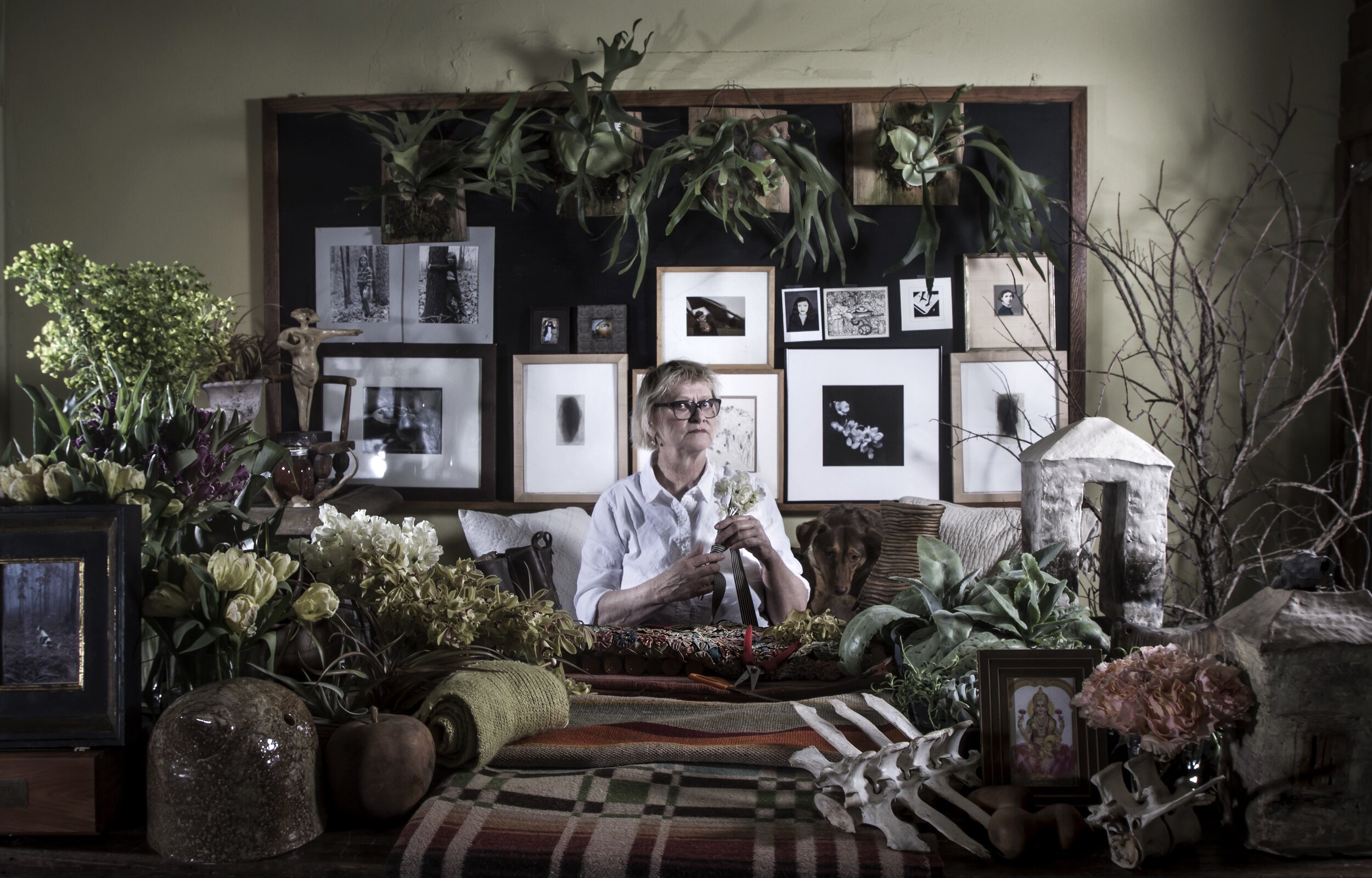
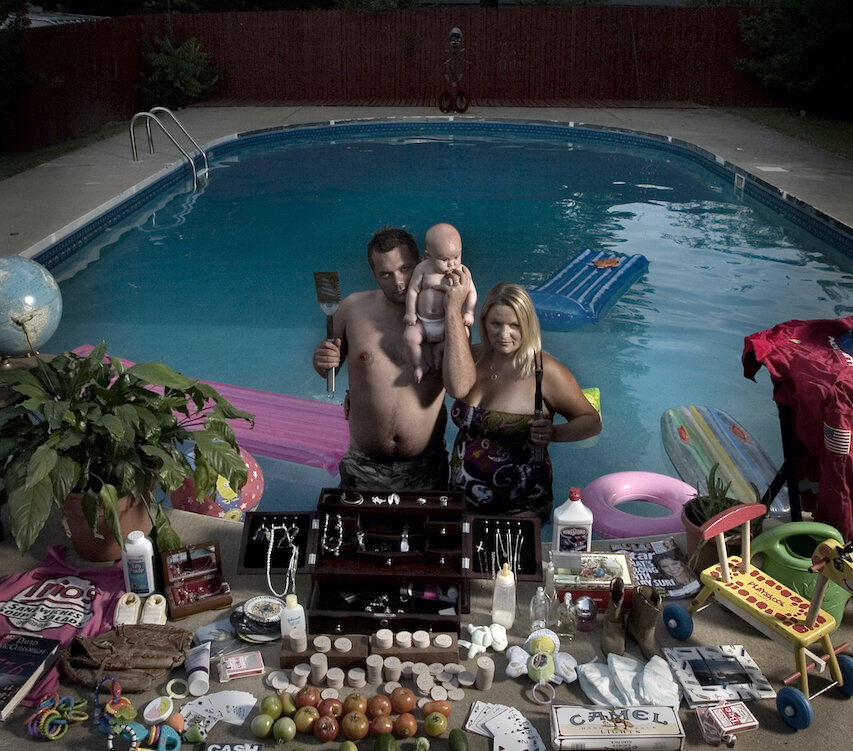
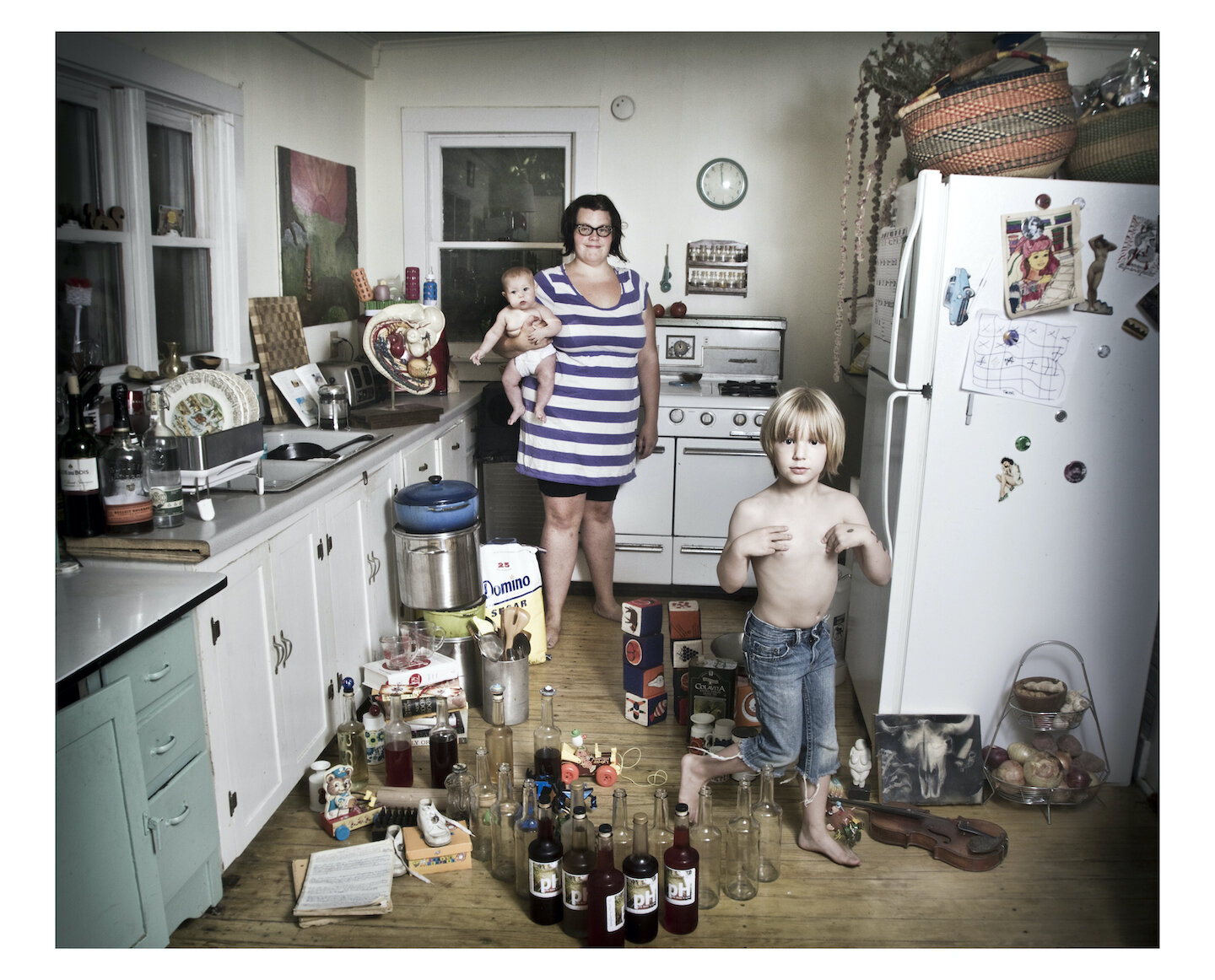
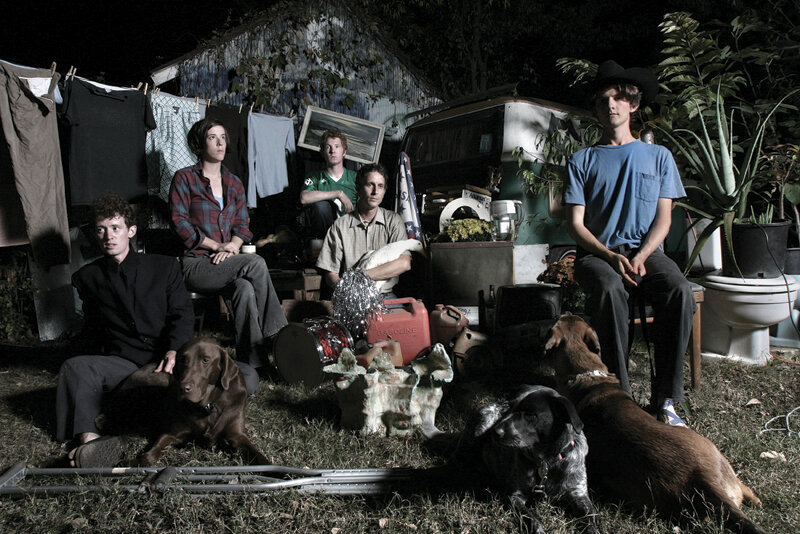
AAS: When you go in to photograph your subject’s ‘habitat’, do you ask them to pull out items with special meaning to them? How does that process work? All I know is that the end result is a wonderful microcosm of their life.
KW: I try to let the sitter have as much control of their portrait as possible. I ask them to choose their objects, but often I have to make suggestions. I believe if it's on display in your house, it must be important to who you are or want to be. Remember, the stuff in the photographs is giving the viewer more information about the subject. So, whether you are proud of your property or not, it provides lots of clues about you.
AAS: I really love 1824 South Garland. That must have been a fun shoot.
1824 South Garland, digital photograph
KW: Aww! I like that one a lot too. I shot that at the end of grad school, so I was really honed in my art. I hadn't done any Habitats in grad school to explore other mediums and photographic work. When it came time for my MFA Thesis show, I had decided I would have two openings. The first was my thesis show Portrayal that hung at the University of Arkansas Fine Arts Center Gallery. The images in Portrayal presented works from artists around the state and examine the relationship between an artist's body of work, their public persona, and their private realities. The second was Habitats of Fayetteville folks or "local celebrities," as I like to call them. This show hung in a very public and popular coffee shop just down the street from U of A, where I also worked as a waitress. The Fayetteville Habitat 1824 South Garland is of Ava and Jason Arsaga, the coffee shop owners. It was effortless to shoot because they just didn't have that much stuff.
AAS: You have had terrific recognition at the Annual Delta Exhibition. I think you have been accepted nine times?! Do you enjoy putting your work out there?
KW: Being accepted into the Delta is something I am very proud of. I've been in and to the Delta a lot. The first time I think I was 21 years old. I always take a group with me. I go in with my plus one, and then my friends to sneak in. They always serve the best drinks at the Delta, and it's always a beautiful, weird show. Let the history books show that my crew took the Delta very seriously and celebrated accordingly.
1411 Towson Avenue, digital photograph, 48th Annual Delta Exhibition (2006)
Artist Rudy, digital photograph, 52nd Annual Delta Exhibition (2010) – Honorable Mention Award
Artist, Fayetteville, Arkansas, digital photograph, 53rd Annual Delta Exhibition (2011) – Contemporaries Honorable Mention Award
Rye Hill, Fort Smith, Arkansas, digital photograph, 54th Annual Delta Exhibition (2012) – Honorable Mention Award
Sara Leflar Art Studio, digital photograph
AAS: You had the great honor of being asked to exhibit two of your Habitat photographs at Crystal Bridges in the Personal Spaces Exhibition. That must have been a thrill!
Winston Taylor, digital photograph
KW: I was high off of it for weeks. Everything about getting in Crystal Bridges was as you would imagine. It starts with a studio visit from the curator, a classy intellectual, Allison Glenn. The champagne toast in front of my Habitats in the museum that sat between polaroids by Andy Warhol and a portrait of Georgia O’Keefe. Lastly, the respect it garnered for me.
AAS: Your TEDx Fayetteville talk was wonderful and I really enjoyed hearing about your process. How was that experience?
KW: I remember artist Zeek Taylor did a Ted Talk at the height of Ted's popularity. I would never have imagined I would do one and enjoy it so much. The opportunity came at a great time because I had finally worked through how nervous I would get before speaking in front of people. I could stand in front of an audience without completely freaking out beforehand. The Ted folks gave me some great tips that helped me feel even more confident. It was a day to remember for a lifetime.
AAS: Along with Caravaggio, who else has inspired you?
KW: Big influences on lighting and composition are Annie Leibovitz, of course, Sally Mann, and Shelby Lee Adams. Maxine Payne was and continues to be a huge inspiration.
How to make you own Quarantine Habitat Portrait, Illustration by Chad Maupin
AAS: Was the Quarantine Habitats series a natural extension of your Habitats series?
KW: Quarantine Habitats are an extension of my Habitats series, where I explored the lives and personalities of my subjects through elaborate orchestrations of their possessions. But when our world drastically changed, I asked people to photograph themselves in their own quarantine habitat and then post them to social media with the hashtag #quarantinehabitat to document our lives during a pandemic. I used simplified instructions to guide everyone through how to shoot their Habitat. There are participants from Italy to Portland. Some art teachers began assigning Quarantine Habitats to their curriculum while they were trying to figure out how to teach from home. It was incredible to see such a great response to a very different way to create an art series. Check out the hashtag #quarantinehabitat to see all of the quarantine habitats.
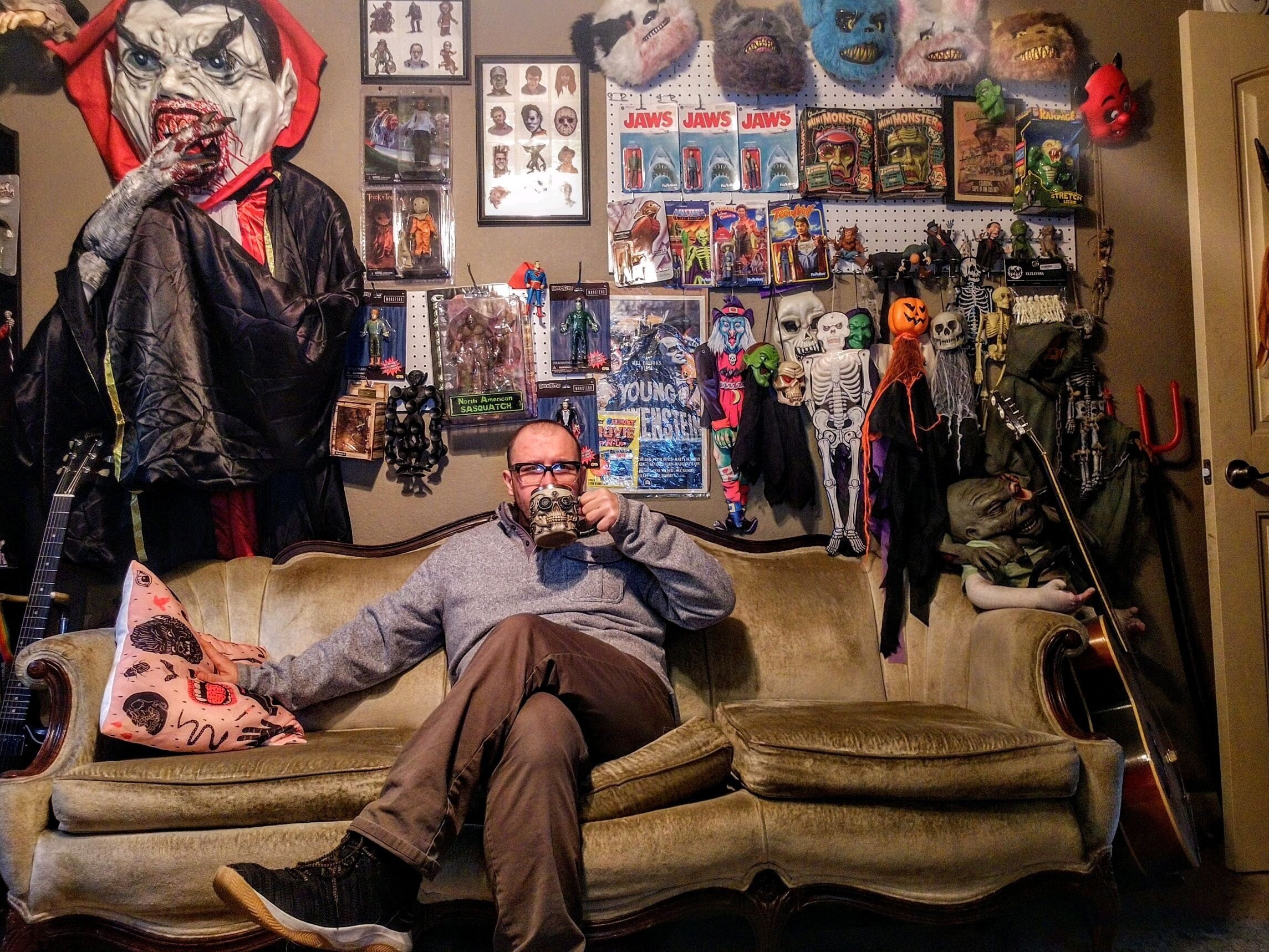
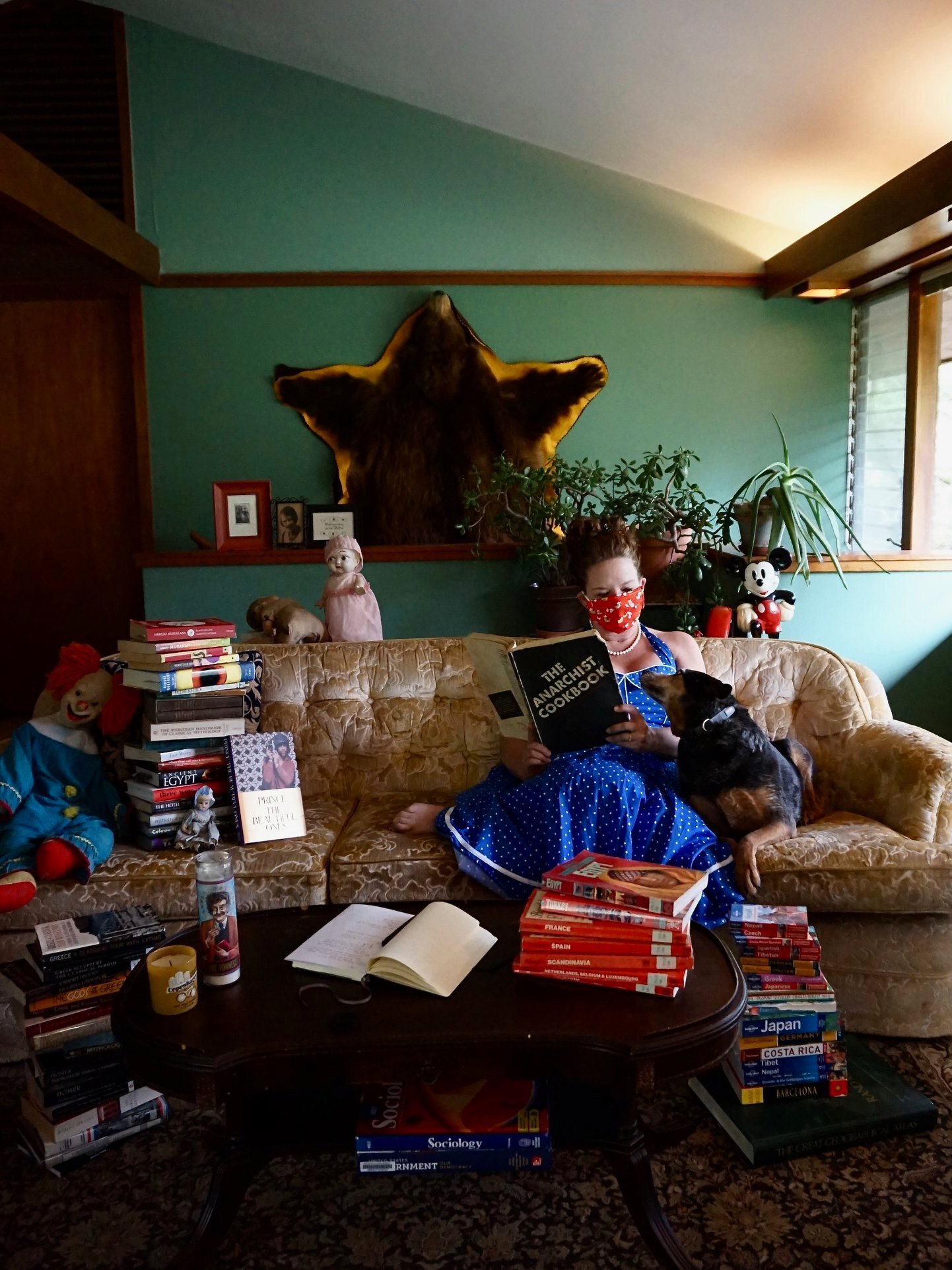
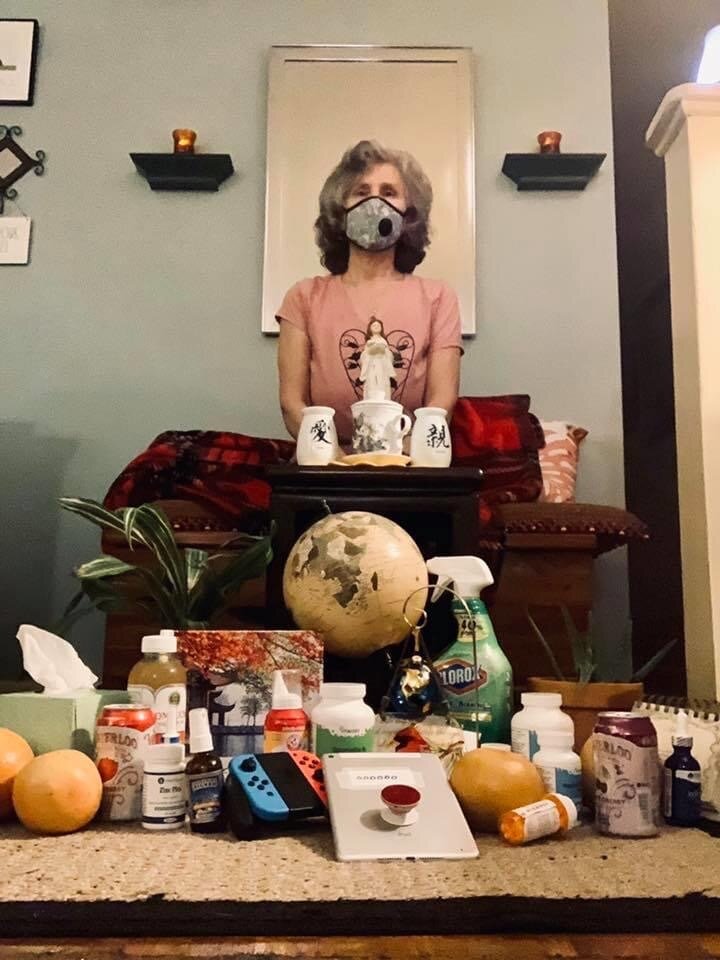
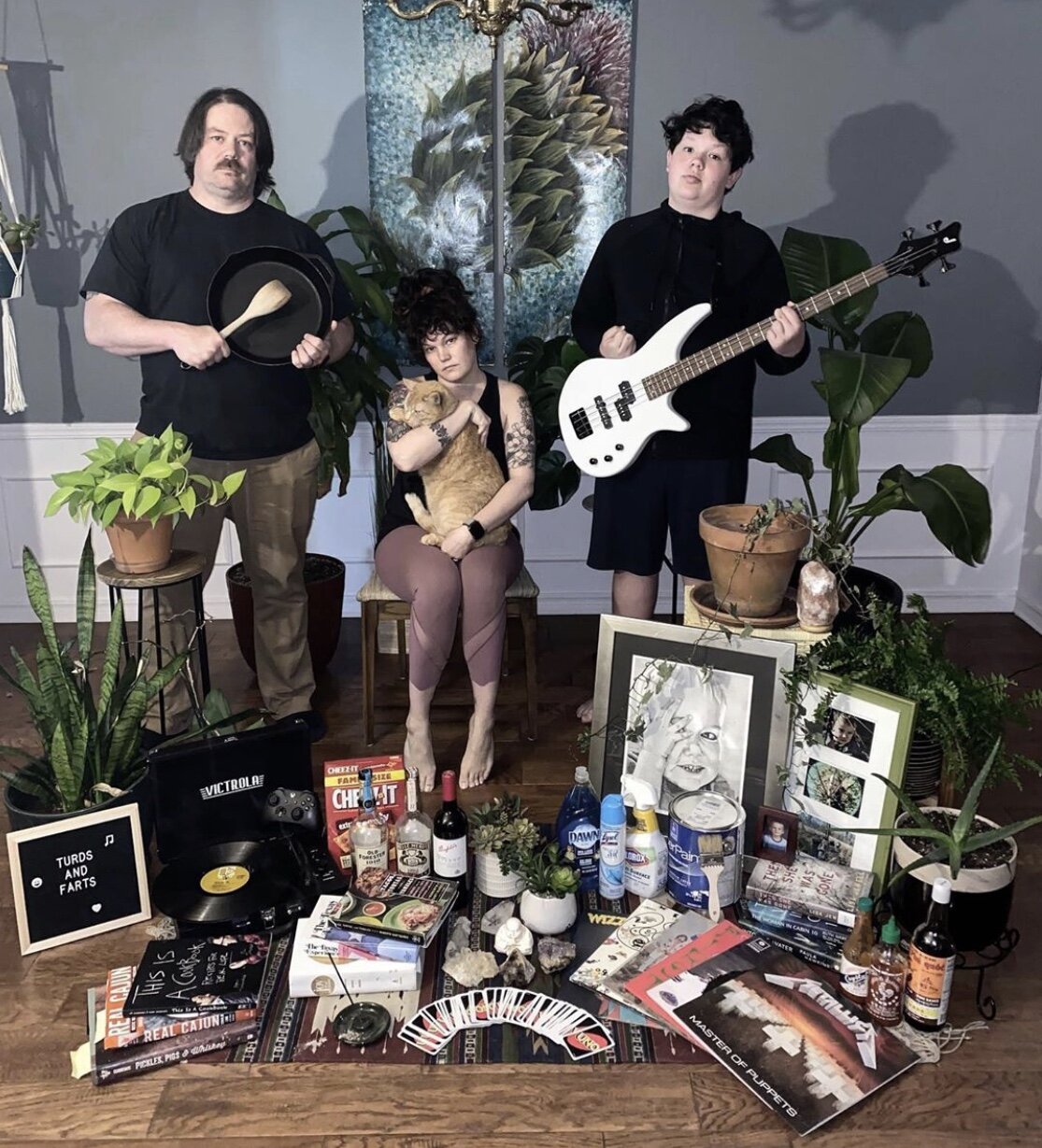
AAS: You have done so much in the community and have been a wonderful advocate for public awareness. Would you talk about your community activism and support of the arts?
KW: I don’t know how I ended up being so involved in the community, but it’s something that I learned in Little Rock. At the time everyone was starting a new magazine (Localist Magazine, Arkansas Times, Food Not Bombs) and I was asked to be a photographer for the local scene. So, when I moved to Northwest Arkansas, I want to keep active in the art scene and being older I wanted to become a leader and forge paths for artists here – and not just for younger artists, older artists often get left out. Soon after the move, the Me Too movement began and that is when I started the Warrior Woman Project. It was all about women’s rights and the need to be heard and to ‘get things off their chests’. My self-portrait began the Warrior Women series. People ask me why I had to have a breast exposed, and I let them know that that's my revenge titty and it's there to remind everyone that I'm a woman and I've had to work twice as hard to make it in the art world.
The Warrior Women series draws on the doctrine of strength in vulnerability, showing each subject with breasts bared, dressed in handmade armor that tells the stories of the battles they have fought, and that readies them for the battles they have yet to face. I utilize the diagonal composition of baroque warrior portraits to create images that testify to the ferociousness of femme people ready to spring into motion to forge a path forward for others. The armor is created by Trisha Guting in an evolving collaboration. Trisha Guting is a Pinay American artist based in Fayetteville, Arkansas, where she founded the Out of Hand Artists Collective. A maker of “trash art,” Guting uses traditional leatherworking and bamboo construction methods as well as repurposed materials to blend the visual and healing arts. Our hashtag is #titsout because we use our breast as tools of intimidation before battle – think Braveheart!


